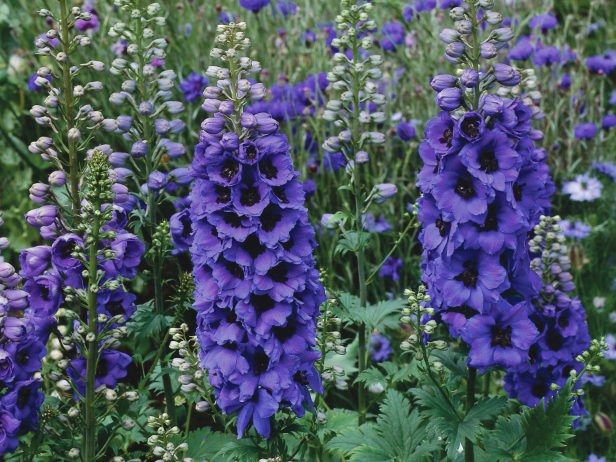Particular care for delphiniums
Delphiniums – a fairly undemanding perennials that do not require any specific care. If you follow a number of subtleties, these flowers will please your eyes throughout the summer.
First of all, pay attention to how you water the plants. The delphiniums need a lot of moisture, but many gardeners allow the following error: pour water on the leaves, causing the roots of her get little, and the plant produces powdery mildew. Delphiniums need watering once a week, the optimal amount of liquid – one bucket. After watering, it is highly desirable to loosen the earth around them. Generally speaking, it is necessary not only to prevent water stagnation, but also in order to through the top layer of soil penetrated more air. The main thing – do not overdo it: one should not delve further five inches, otherwise you risk damaging the root system.
Pruning and fertilizing
Extremely important aspect of care is pruning. If you regularly remove wilted blossoms, delphiniums will bloom all summer. After the first flowering should be cut all the stem is almost at the root. If your grade is high, it is advisable grown buds to tie and set them support, then they will fall or even break under its own weight. Not to spoil the appearance of the flower beds, it is best to use metal rods, bent in an arc. In order not to damage the roots, the supports must be inserted in the ground at some distance from the flowers.
Do not neglect and fertilizers. In the spring the young delphiniums can be fed with mineral or liquid organic fertilizers – manure, humus, peat. During the summer – especially if it was rainy – a good idea to sprinkle the leaves of the common ash. It is a good prevention of powdery mildew.
With the onset of autumn, when the flowers wither, it is imperative to prune all the stems, leaving 25-30 cm from their height. In winter in the absence of snow cover is necessary to cover the plants with fir twigs or simple straw. While delphiniums comfortably tolerate even the most severe frosts under high snow, spring thawing can have a detrimental effect on their health and lead to podgnivaniyu roots. In order to avoid moisture penetration into the root cavity of the stems can be to cover with clay.
